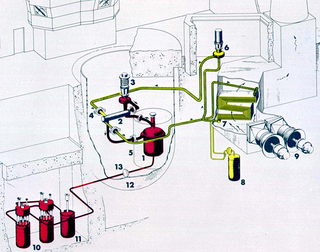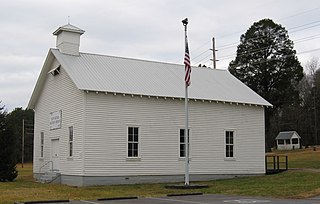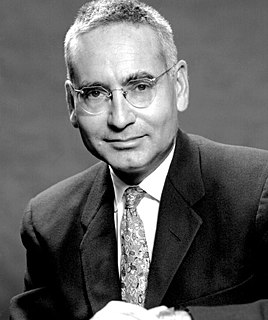 W
WOak Ridge National Laboratory (ORNL) is a U.S. multiprogram science and technology national laboratory sponsored by the U.S. Department of Energy (DOE) and administered, managed, and operated by UT–Battelle as a federally funded research and development center (FFRDC) under a contract with the DOE.
 W
WFNET is a wide-area power system frequency measurement system. Using a type of phasor measurement unit (PMU) known as a frequency disturbance recorder (FDR), FNET/GridEye is able to measure the power system frequency, voltage, and angle very accurately. These measurements can then be used to study various power system phenomena, and may play an important role in the development of future smart grid technologies. The FNET/GridEye system is currently operated by the Power Information Technology Laboratory at the University of Tennessee (UTK) in Knoxville, Tennessee, and Oak Ridge National Laboratory (ORNL) in Oak Ridge, Tennessee.
 W
WThe High Flux Isotope Reactor is a nuclear research reactor located at Oak Ridge National Laboratory (ORNL) in Oak Ridge, Tennessee, United States. Operating at 85 MW, HFIR is one of the highest flux reactor-based sources of neutrons for condensed matter physics research in the United States, and it provides one of the highest steady-state neutron fluxes of any research reactor in the world. The thermal and cold neutrons produced by HFIR are used to study physics, chemistry, materials science, engineering, and biology. The intense neutron flux, constant power density, and constant-length fuel cycles are used by more than 500 researchers each year for neutron scattering research into the fundamental properties of condensed matter. HFIR has approximately 600 users each year for both scattering and in-core research.
 W
WJaguar or OLCF-2 was a petascale supercomputer built by Cray at Oak Ridge National Laboratory (ORNL) in Oak Ridge, Tennessee. The massively parallel Jaguar had a peak performance of just over 1,750 teraFLOPS. It had 224,256 x86-based AMD Opteron processor cores, and operated with a version of Linux called the Cray Linux Environment. Jaguar was a Cray XT5 system, a development from the Cray XT4 supercomputer.
 W
WMercury is a distributed metadata management, data discovery and access system. It is a scientific data search system to capture and manage biogeochemical and ecological data in support of the Earth science programs funded by the United States Department of Energy (DOE) and United States Geological Survey (USGS) - Department of Interior (DOI). Mercury was originally developed for NASA, but the consortium is now supported by USGS and the DOE. Ongoing development of Mercury is done through an informal consortium at Oak Ridge National Laboratory.
 W
WThe Molten-Salt Reactor Experiment (MSRE) was an experimental molten salt reactor at the Oak Ridge National Laboratory (ORNL) researching this technology through the 1960s; constructed by 1964, it went critical in 1965 and was operated until 1969. The costs of a cleanup project were estimated at about $130 million.
 W
WNew Bethel Baptist Church is a historic church on Bethel Valley Road in Oak Ridge, Tennessee.
 W
WThe Spallation Neutron Source (SNS) is an accelerator-based neutron source facility in the U.S. that provides the most intense pulsed neutron beams in the world for scientific research and industrial development. Each year, this facility hosts hundreds of researchers from universities, national laboratories, and industry, who conduct basic and applied research and technology development using neutrons. SNS is part of Oak Ridge National Laboratory, which is managed by UT-Battelle for the United States Department of Energy (DOE). SNS is a DOE Office of Science user facility, and it is open to scientists and researchers from all over the world.
 W
WSummit or OLCF-4 is a supercomputer developed by IBM for use at Oak Ridge National Laboratory, capable of 200 petaFLOPS, making it the second fastest supercomputer in the world Its current LINPACK benchmark is clocked at 148.6 petaFLOPS. As of November 2019, the supercomputer had ranked as the 5th most energy efficient in the world with a measured power efficiency of 14.668 gigaFLOPS/watt. Summit was the first supercomputer to reach exaflop speed, achieving 1.88 exaflops during a genomic analysis and is expected to reach 3.3 exaflops using mixed-precision calculations.
 W
WThe Alvin Weinberg Foundation was a registered UK charity, operating under the name Weinberg Next Nuclear, that campaigned for research and development into next-generation nuclear energy. In particular, it advocated advancement of Liquid Fluoride Thorium Reactor (LFTR) and other Molten Salt Reactor (MSR) technologies.
 W
WTitan or OLCF-3 was a supercomputer built by Cray at Oak Ridge National Laboratory for use in a variety of science projects. Titan was an upgrade of Jaguar, a previous supercomputer at Oak Ridge, that uses graphics processing units (GPUs) in addition to conventional central processing units (CPUs). Titan was the first such hybrid to perform over 10 petaFLOPS. The upgrade began in October 2011, commenced stability testing in October 2012 and it became available to researchers in early 2013. The initial cost of the upgrade was US$60 million, funded primarily by the United States Department of Energy.
 W
WThe X-10 Graphite Reactor is a decommissioned nuclear reactor at Oak Ridge National Laboratory in Oak Ridge, Tennessee. Formerly known as the Clinton Pile and X-10 Pile, it was the world's second artificial nuclear reactor, and the first designed and built for continuous operation. It was built during World War II as part of the Manhattan Project.